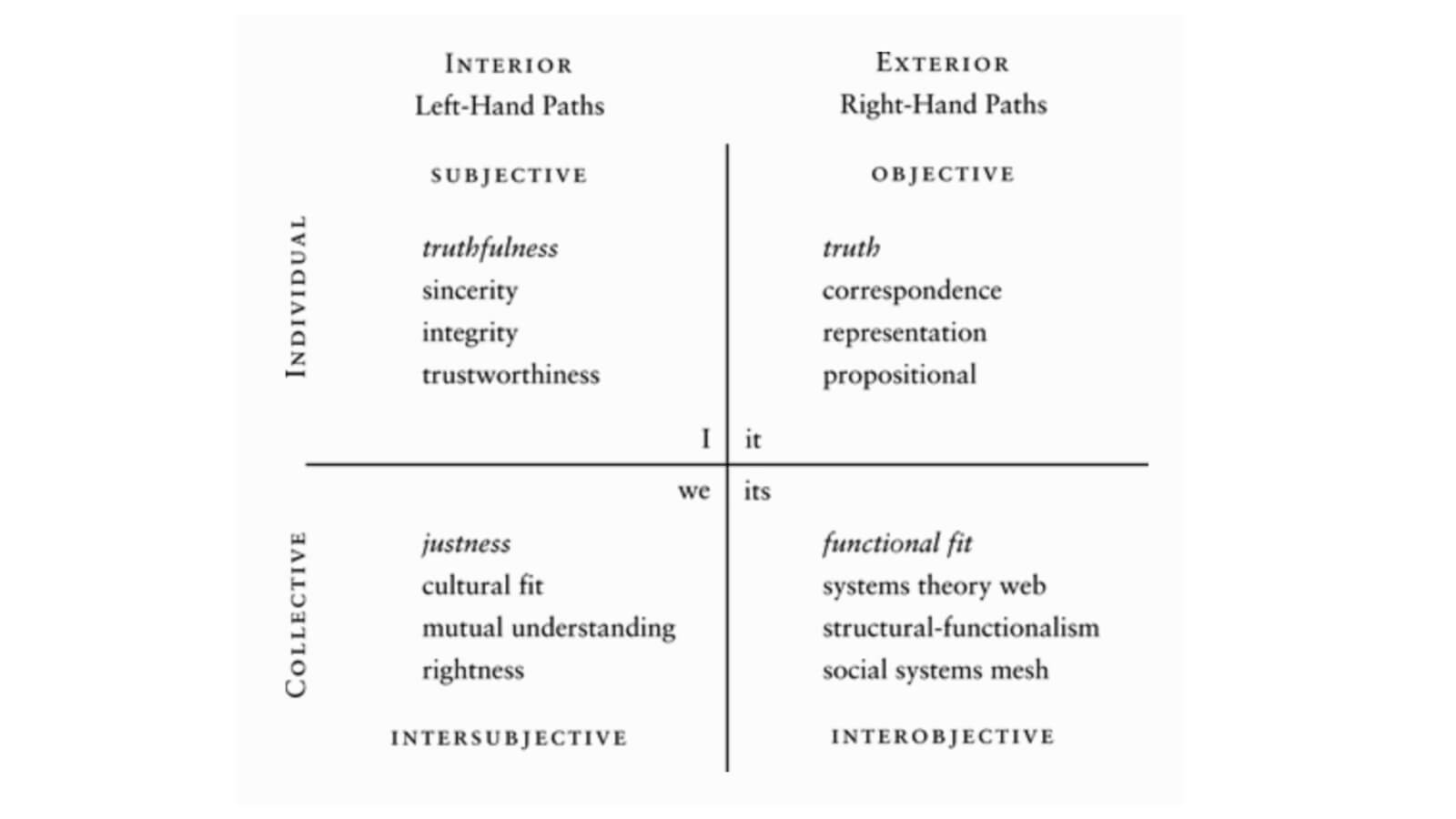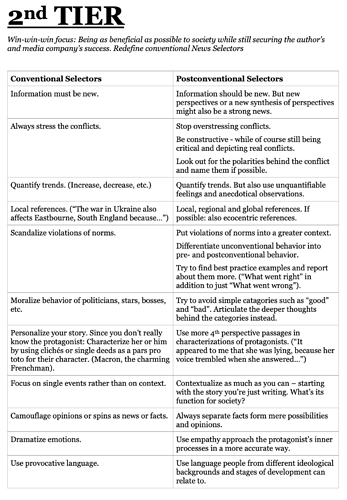Stefan Schultz is a journalist for Der Spiegel magazine since 2007, and a student of integral theory since 2018. In this fun and far-ranging discussion, Corey deVos talks to Stefan about his own integral approach to journalism, taking a careful look at the primary methods and motivations of journalism we see at each major stage of development. They then go on to suggest what a more integral form of journalism might look like, while also exploring a number of related topics — the role of art and aesthetics in journalism, the distinction between orthodox and heterodox sources of information, the collapse of legitimacy in our media institutions, and much more.
I was very excited to have this discussion with Stefan, and to learn more about his approach and practice as an integral journalist. There are few things I can think of that the world needs more right now.
—Corey deVos
Part 1: Introduction
We live in an age of extreme fragmentation, where our informational terrains have become more broken and balkanized than ever before. Whether it’s the corporate propaganda coming through the mainstream media, ideological propaganda coming from any number of narrow partisan outlets, blatant state propaganda coming from our governments, or the bottom-up aperspectival lunacy coming from social media — we are flooded on all sides by deliberately-partial truths, carefully tailored for each of us by unseen algorithms that reinforce our biases and keep us clicking. As a result we’ve seen a critical breakdown of legitimacy and trust in our media institutions, our collective sense-making, and our overall sense of shared reality.
And of course, Integral is very comfortable working with partial truths, pulling them together into a more coherent understanding of reality. We often say things like “everyone is right” — but there is a difference between “partial truths” that we definitely want to integrate, and “ deliberately partial truths” — another name for propaganda, and something we want to be very cautious about integrating or else we risk infecting our own operating systems with socially-engineered malware.
When the information we have grown to depend upon for our own sense-making has become so broken and fragmented, so do our minds. And when a constant firehose of false narratives are internalized and become a core part of our own identity, it can be very difficult to begin healing the divisions between us. With any hope, this conversation (and others like it) can help begin to heal our hearts, and defrag our heads.
Part 2: Why Don’t We Trust Our Media Institutions?
Here we take a close look at the breakdown of media legitimacy, using Ken Wilber’s “Four Faces of Truth” — truth, truthfulness, justness, and functional fit — in order to guide the discussion.
Part 3: Amber Journalism
Here we discuss some of the common methods, motivations, and characteristics of Amber-stage journalism — a worldview that is traditionalist and mythic in nature, and almost always held as absolute. Culturally, amber worldviews can be seen in fundamentalism (my God is right no matter what); extreme patriotism (my country is right no matter what); and ethnocentrism (my people are right no matter what).
Stefan’s summary:
Local-patriotic reports, appreciation of community members. Satisfying expectations of peer groups rather than striving for objectivity – ergo rather uncritical of peer group’s errors and offenses. Articles of state media, repeating the dogmas of authoritarian regimes – and reviling the regime’s adversaries. Black-and-white stories. Fake news. Highly schematic formats (e.g., finance market reports that mainly report numbers and percentages, strictly descriptive sport game synopses). Writing for one’s superiors and community.
Main Goal: Strengthen peer group.
Target group: Members of own community or regime.
World view: Ethnocentric.
Conference culture: Bosses distribute work.
Language clues: Positivistic. Cliché-ridden, overused phrases. Impersonal writing style.
Bylines: One to few names or no byline at all.
Media with such a gravity center: RT, CCTV, local newspapers as portrayed in “After Life” (The Tambury Gazette)
To learn more about these stages of development, be sure to check out this fantastic resource: Learn Integral by Watching Movies (And Playing Video Games!)
Part 4: Orange Journalism
Now we take a look at early Orange (Expert) and mature Orange (Achiever) forms of journalistic practice. In an orange worldview, the individual begins to move away from the amber conformity that reifies the views of one’s religion, nation, or tribe. Culturally, the orange worldview realizes that “truth is not delivered; it is discovered,” spurring the great advances of science and formal rationality.
Stefan’s summary:
Early Orange (Expert)
Detailed and well-informed reports. High expertise and factfullness. Extremely critical, especially about clearly demarcated problems; often perceiving criticism as the main or even the only purpose of quality journalism. One-sided commentary, articles with firm ideological bias, leaving out arguments contradicting one’s spin or mentioning them only to rabulistically destroy them. Quick to provoke controversies to gain clicks and copy sales without caring too much whether the controversies are distorted, unbalanced or blown out of proportion. Scoops of interpretation. Campaign Journalism.
Main Goal: Opinion leadership.
Target group: Experts and likeminded audience.
World view: Sociocentric.
Conference culture: Debate.
Language clues: Hard judgements, crushing criticism, righteousness. Simple causal linearities. Reports often lack structure and priorisation.
Byline: One author often researches and writes alone (or takes all the credit even if colleagues helped him out). Names of fixers rarely mentioned at all.
Media with such a gravity center: Die Welt, Greenpeace Magazine, boulevard media such as “Bild” or “Sun” (somewhere between blue and early orange)
Late Orange (Achiever)
Highly analytical reports that dialectically weigh different views to produce a well-considered synthesis – but a bit overconfident to be very close to the absolute truth. Inclusion of more perspectives, yet mainly mainstream views within the “Overtone window”. Focus on right quadrants(“flatland journalism”). Still highly critical but starting to understand the value of constructive journalism. Beginning to address systemic problems – but rarely questioning a system’s attractors or general operation logic. Mentioning emotions, but shying away from deeper empathy or even dismissing it as “unjournalistic”.
Keen on scoops and being the first to report breaking news. Adjusting topics and language to target groups, often different styles for different paper sections. Strongly stressing credibility. Long-term source and audience management rather than mayfly scandals. Bringing down dodgy powerful people at its best – but manipulative and problem obsessed (“problem media”) at its worst.
Main Goal: Success.
Target group: Society’s elite and intellectuals. Various sub target groups via line extensions.
World view: Globocentric.
Conference culture: Dialogue.
Language clues: Cognitively nuanced. Either-or expressions. Elevated language register. Often well structured. Long story formats. Strong negative focus. Over-confident writing style. Placative descriptions of emotions. Gendering, but mainly as a sales strategy.
Byline: Numerous names, as many colleagues contribute pieces of information (sometimes only to push themselves into the story). Fixers’ contributions often mentioned underneath articles, but not in the byline.
Media with such a gravity center: SPIEGEL, Time Magazine, Economist.
Part 5: Green Journalism
Next we take a careful look at Green forms and practices of journalism. Green worldviews are marked by pluralism, or the ability to see that there are multiple ways of seeing reality. If orange sees universal truths (“All men are created equal”), green sees multiple universal truths — different universals for different cultures. Green ethics continue, and radically broaden, the movement to embrace all people.
In its unhealthy form, green worldviews can lead to extreme relativism, where all beliefs are seen as relative and equally true, which can in turn lead to the nihilism, narcissism, irony, and meaninglessness exhibited by many of today’s intellectuals, academics, and trend-setters.
Stefan’s summary
Empathic writing. Deeper exploration of cultural biases and contradictory viewpoints. Focus on, sometimes overweighing of neglected viewpoints and narratives (a Chinese KP functional) outside the “Overtone window”. Growing sensitivity for structural discriminations, including in journalistic language itself. Questioning whole systems while struggling to suggest better ones. Humoristic commentaries that deconstruct norms.
Focus on left quadrants, i.e. often more anecdotical than empirical (“swampland journalism”). High subjectivity (“Gonzo journalism”), reporters more frequently show up as first-person narrators. Often still blind to own performative contradictions. Tapping into the full potential of constructive journalism. Visionary at its best – but wishy-washy, drowning in perspectives and “post factual” at its worst.
Main Goal: Equality.
Target group: Intellectuals, system critics.
World view: Ecocentric.
Conference culture: Discourse.
Language clues: Strong relativism. Both-and-sentences. Cyclic causalities. More ambiguity and unresolved contradictions. Self referentiality. Intertextual references. Gendering out of conviction.
Byline: Columnists that are their own brand. Small but deeply collaborative author collectives, often mentioning the whole collective even if not all of them contributed to a story. Fixers directly featured in bylines.
Media with such a gravity center: Spiegel.de (in part) New York Times (in part), Republik (in part), Salon
To learn more about these stages of development, be sure to check out this fantastic resource: Learn Integral by Watching Movies (And Playing Video Games!)
Part 6: Aesthetics and Journalism
Der Spiegel is well known for its provocative and sometimes controversial cover art, using powerful imagery to convey a particular moral or justice-related message. Here Stefan and Corey explore the close relationship between aesthetics and journalism, and how art can simultaneously help humanize a story and convey deeper meanings, while also creating enough critical distance for the reader to fully absorb uncomfortable truths without feeling emotionally overwhelmed. An integral approach to journalism would consciously balance beauty, truth and goodness (or “justness”, as Ken calls it above), as discussed here.
Part 7: What Is Integral Journalism?
Finally we end with Stefan’s five proposals for a more Integral approach to journalism — based on integral principles of non-exclusion (“everyone is right”), enfoldment (“some are more right than others”), and enactment (“If you want to know this, do that”). What are the most significant challenges preventing a genuinely integral journalism from emerging? Watch to find out!
Stefan’s summary:
Main Goal: Evolution and transformation of individuals and collectives.
Target group: Leading edge thinkers. Generally, everyone if well facilitated.
World view: Ecocentric.
Conference culture: Cocreation of global network expanding well beyond the media bubble.
Language clues: Complex yet crystal-clear language. Neologisms. Both-and and either-or sentences, use of tetralemma. Descriptions of polarities.
Bylines: Sometimes: Final credits like in a movie.
Media with such a gravity center: Evolve? Integral Life?
Main Goal: Evolution and transformation of individuals and collectives.
Target group: Leading edge thinkers. Generally, everyone if well facilitated.
World view: Ecocentric.
Conference culture: Cocreation of global network expanding well beyond the media bubble.
Language clues: Complex yet crystal-clear language. Neologisms. Both-and and either-or sentences, use of tetralemma. Descriptions of polarities.
Bylines: Sometimes: Final credits like in a movie.
Media with such a gravity center: Evolve? Integral Life?

